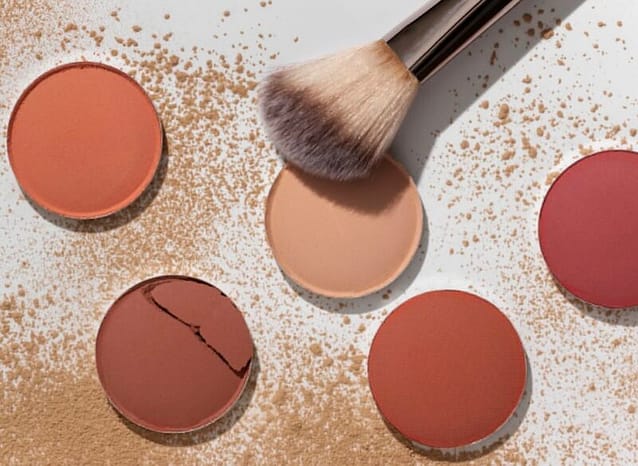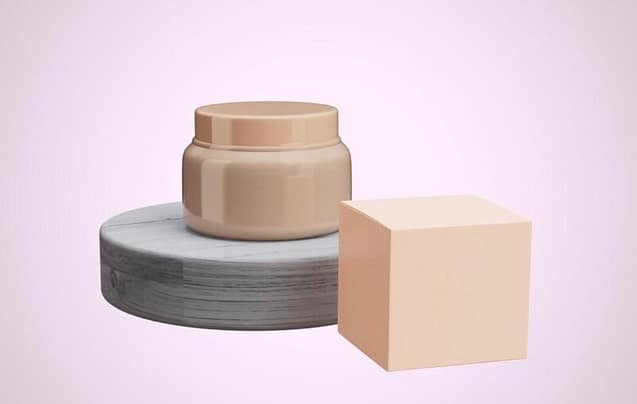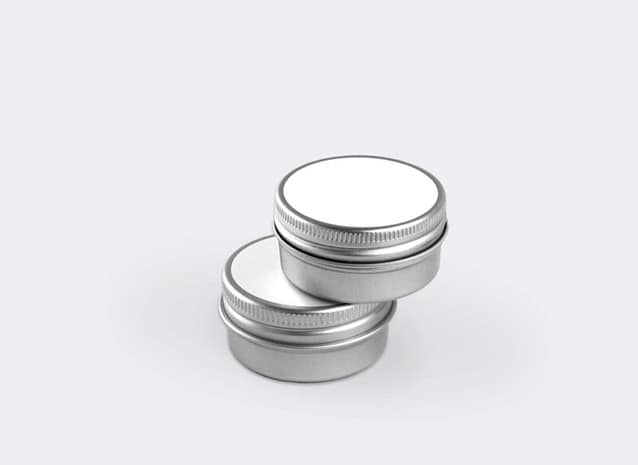Crafting Your Own Natural Blush and Bronzer Blends involves choosing plant-based pigments, incorporating botanical extracts, and adding essential oils for skin benefits. Experiment with recipes for a personalized, healthier beauty routine. Consider skin tone, blend with proper brushes, and prioritize eco-friendly packaging for sustainability.
I. Introduction
Embracing natural, vegan, and organic ingredients in beauty products ensures a chemical-free, cruelty-free approach. These ingredients nourish and protect the skin, promoting overall well-being. You should read my blog post about DIY Makeup, it will encourage to explore DIY.
Opting for natural blush and bronzer blends enhances this holistic approach, offering a healthier alternative with plant-based pigments, botanical extracts, and essential oils. This choice supports skin health and aligns with sustainability, contributing to a greener beauty routine.
II. Understanding Natural Ingredients
A. Key natural ingredients for blush and bronzer include:
1. Plant-based pigments
Extracted from fruits, vegetables, or flowers, these pigments provide vibrant color without synthetic additives.
2. Botanical extracts
Ingredients like chamomile, aloe vera, or green tea offer skincare benefits, soothing and nourishing the skin.
3. Essential oils
Adding fragrance and additional skincare properties, essential oils like lavender or jojoba contribute to a luxurious and beneficial formulation.
B. Benefits of using these natural ingredients for skin health
Using natural ingredients in blush and bronzer offers several benefits for skin health:
1. Gentleness
Natural ingredients are often gentler on the skin, reducing the risk of irritation or allergic reactions.
2. Nourishment
Plant-based pigments and botanical extracts provide essential nutrients, promoting healthier and more radiant skin.
3. Avoidance of Harmful Chemicals
By avoiding synthetic additives and chemicals, natural ingredients prevent potential harm and long-term damage to the skin.
4. Anti-inflammatory Properties
Many natural ingredients are anti-inflammatory, helping soothe and calm the skin.
5. Compatibility with Sensitive Skin
Individuals with sensitive skin often find natural ingredients to be more compatible, minimizing the risk of adverse reactions.
III. Crafting Your Own Natural Blush and Bronzer Blends for a Healthier Beauty Routine
A. Natural Blush Recipes
1. Rosy Cheeks Blend
Ingredients:
- 1 tbsp arrowroot powder
- 1 tsp hibiscus powder (for color)
- 1 tsp beetroot powder (for additional tint)
- 2 drops of rosehip essential oil
Instructions:
- Mix arrowroot, hibiscus, and beetroot powders in a bowl.
- Add rosehip essential oil drop by drop, stirring until smooth.
- Adjust color intensity by adding more hibiscus or beetroot powder.
- Transfer to a small jar for storage.
2. Peachy Glow Blend
Ingredients:
- 1 tbsp arrowroot powder
- 1 tsp kaolin clay
- 1 tsp dried peach powder
- 3 drops sweet orange essential oil
Instructions:
- Combine arrowroot powder, kaolin clay, and peach powder in a bowl.
- Slowly add sweet orange essential oil, stirring until well incorporated.
- Adjust the texture by adding more arrowroot or kaolin clay if needed.
- Store the blend in a container with a tight lid.
Experiment with these recipes, tailoring them to your preferences for a personalized, natural blush experience.
B. Natural Bronzer Recipes
1. Sun-kissed Radiance Blend
Ingredients:
- 1 tbsp cocoa powder
- 1 tsp cinnamon powder
- 1 tsp nutmeg powder
- 3 drops vanilla extract (optional)
Instructions:
- Mix cocoa, cinnamon, and nutmeg powders in a bowl.
- Gradually add vanilla extract, stirring until consistent texture.
- Adjust the shade by adding more cocoa or cinnamon powder if desired.
- Transfer the mixture into a compact container.
2. Warm Cinnamon Contour Blend
Ingredients:
- 1 tbsp arrowroot powder
- 1 tsp ground cinnamon
- 1 tsp ground ginger
- 2 drops sandalwood essential oil
Instructions:
- Combine arrowroot powder, ground cinnamon, and ginger in a bowl.
- Add sandalwood essential oil gradually, mixing well.
- Adjust the consistency by adding more arrowroot if needed.
- Store the blend in a secure container.
Experiment with these DIY bronzer recipes to achieve a sun-kissed glow and warm contour while embracing natural and organic ingredients.

IV. How to choose natural ingredients for your skin type?
A. Choosing Natural Ingredients for Your Blush Based on Skin Type
1. For Sensitive Skin
Opt for ingredients like chamomile and calendula, known for their soothing properties. Avoid fragrances and synthetic dyes.
2. For Dry Skin
Look for hydrating ingredients like aloe vera and jojoba oil to add moisture. Cream blushes with shea butter can provide a dewy finish.
3. For Oily or Acne-Prone Skin
Choose oil-free options with ingredients like kaolin clay or arrowroot powder. Consider formulas with acne-fighting elements like tea tree oil.
4. For Mature Skin
Seek out anti-aging ingredients such as rosehip oil or vitamin E. Cream or gel blushes can provide a youthful, dewy appearance.
5. For Normal/Combination Skin
Experiment with natural ingredients, including plant-based pigments and botanical extracts. Your skin type may tolerate a range of formulations.
6. Consider Your Undertones
Match blush hues to your skin's undertones - warmer tones (peaches, corals) for warm undertones, and cooler tones (pinks, berries) for cool undertones.
7. Patch Test New Ingredients
Before fully incorporating a new ingredient, perform a patch test to ensure compatibility and avoid potential allergic reactions.
Always read product labels, and when in doubt, consult with a dermatologist or skincare professional for personalized advice on choosing natural ingredients suitable for your specific skin type.
B. Choosing Natural Ingredients for Your Bronzer Based on Skin Type
1. For Sensitive Skin
Opt for gentle ingredients like chamomile or aloe vera. Avoid fragrances and choose hypoallergenic options.
2. For Dry Skin
Look for moisturizing ingredients such as cocoa butter or shea butter. Cream or liquid formulas can add a luminous, hydrated finish.
3. For Oily or Acne-Prone Skin
Choose oil-free options with ingredients like kaolin clay or silica for a matte finish. Seek non-comedogenic formulas to prevent clogging pores.
4. For Mature Skin
Prioritize ingredients with anti-aging properties, such as vitamin C or antioxidants. Cream or gel bronzers can offer a subtle, dewy effect.
5. For Normal/Combination Skin
Experiment with natural ingredients, including plant-based pigments and botanical extracts. Powder or cream formulas may work well for this versatile skin type.
6. Consider Your Undertones
Select bronzer shades that complement your skin's undertones - warm tones for warm undertones and cool tones for cool undertones.
7. Patch Test New Ingredients
Always perform a patch test when introducing new ingredients to ensure they suit your skin and won't irritate.
8. Sun Protection
If sun protection is a concern, consider bronzers with added SPF or ingredients like zinc oxide for sun-blocking benefits.
Tailor your choice of bronzer ingredients to your specific skin needs, and don't hesitate to consult a skin care professional for personalized advice.
V. Natural Ingredients of Blush to match the Occasions
| ||||||||||||||||||
|---|---|---|---|---|---|---|---|---|---|---|---|---|---|---|---|---|---|---|
VI. Natural Ingredients of Bronzer Matching the Occasions
|
|---|

VII. Storage and Shelf Life
A. Proper storage of homemade blush and bronzer blends
1. Airtight Containers
Store your homemade blends in airtight containers to prevent exposure to air, which can lead to drying and degradation of ingredients.
2. Dark or Opaque Containers
Choose containers that are dark or opaque. It will protect your blends from light exposure. It helps preserve the integrity of natural ingredients.
3. Cool and Dry Location
Store your blush and bronzer in a cool, dry place to prevent moisture from affecting the texture and longevity of the products.
4. Avoid Direct Sunlight
Keep the containers away from direct sunlight to prevent heat and UV rays from degrading the natural ingredients.
5. Use Clean Tools
Ensure that the tools you use to apply the blush and bronzer are clean. Dirty brushes or fingers can introduce contaminants that may spoil the products.
6. Check for Changes
Regularly check the texture, color, and odor of your homemade blends. Any changes may indicate spoilage.
7. Keep Water Out
Moisture can lead to clumping or spoilage. Ensure containers are tightly sealed. And avoid using wet tools when applying the products.
8. Label with Date
Label your containers with the date of creation. It helps you keep track of the shelf life and know when it's time to replace or refresh the blends.
9. Refrigeration (Optional)
If your blends contain perishable ingredients like fresh extracts, consider storing them in the refrigerator. It can extend their shelf life.
10. Avoid Contamination
Be cautious when using your fingers to apply the products. If possible, use clean brushes or applicators to minimize the risk of contamination.
By following these storage tips, you can ensure that your homemade blush and bronzer blends remain effective, safe, and enjoyable to use over an extended period.
B. Guidelines for determining the shelf life of natural beauty products
Determining the shelf life of natural beauty products involves considering various factors. Here are guidelines to help you assess the longevity of your products:
1. Check Ingredients
Different natural ingredients have varying shelf lives. Be aware of the stability and typical duration for each component.
2. Expiration Dates
Many natural beauty products have an expiration date or recommended use-by date. Follow these guidelines for the optimal freshness and efficacy of the product.
3. Preservatives and Stabilizers
If your natural product contains water or water-based ingredients, it may require natural preservatives or stabilizers. Consider the presence and effectiveness of these elements in extending shelf life.
4. Storage Conditions
Proper storage is crucial. Keep your beauty products in a cool, dark place to prevent exposure to light and heat, which can accelerate deterioration.
5. Packaging
The type of packaging can impact shelf life. Airless pumps or airtight containers can help prevent oxidation and contamination, maintaining the product's integrity.
6. Observe Changes
Regularly inspect your natural beauty products for changes in color, texture, or smell. Any noticeable alterations may indicate spoilage or degradation.
7. Separation or Clumping
If your product separates or forms clumps, it may be a sign of instability. Thoroughly shake or mix the product, and if the issue persists, consider discarding it.
8. Microbial Growth
Watch for signs of microbial growth, such as mold or an off-putting smell. These indicate contamination and render the product unsafe for use.
9. Consider the Environment
Environmental factors, such as humidity and temperature fluctuations, can impact the shelf life of natural beauty products. Store them in a stable environment.
10. Record Creation Date
Label your products with the date of creation. It helps you track how long the product has been in use and determine when it may be nearing the end of its shelf life.
11. Educate Yourself
Stay informed about the specific characteristics and shelf life of the natural ingredients you use. This knowledge will guide you in formulating and preserving your beauty products effectively.
By combining these guidelines, you can make informed decisions about the shelf life of your natural beauty products and ensure a safe and effective skincare routine.
VIII. Sustainability in Beauty
A. The environmental impact of choosing natural ingredients
Choosing natural ingredients in beauty products can have positive environmental impacts compared to their synthetic counterparts. Here are several ways in which the use of natural ingredients contributes to environmental sustainability:
1. Reduced Chemical Pollution
Natural ingredients are often sourced from plants, minerals, or other organic sources, minimizing the use of synthetic chemicals that can contribute to environmental pollution.
2. Biodiversity Preservation
Natural ingredients often involve a diverse range of plant species. Supporting biodiversity in agriculture helps maintain ecosystems and promotes healthier environments.
3. Sustainable Farming Practices
Many natural ingredients are from farms that use sustainable practices, such as organic farming. These methods reduce soil degradation, promote water conservation, and avoid synthetic pesticides and fertilizers.
4. Carbon Footprint Reduction
The production of natural ingredients may have a lower carbon footprint compared to synthetic alternatives, particularly when sourced locally. It can contribute to mitigating climate change.
5. Biodegradability
Natural ingredients are generally biodegradable, meaning they break down easily in the environment. It contrasts with some synthetic ingredients that may persist in the environment for extended periods.
6. Reduced Water Consumption
Some natural ingredients require less water for cultivation. While water-intensive crops used in the production of synthetic ingredients can contribute to water conservation efforts.
7. Ethical Sourcing
Many brands that use natural ingredients prioritize ethical sourcing practices, ensuring fair wages for workers and supporting communities. This ethical approach extends to environmental stewardship.
8. Avoidance of Microplastics
Natural ingredients eliminate the use of microplastics commonly found in some synthetic beauty products. Microplastics can have detrimental effects on aquatic ecosystems.
9. Less Energy Intensive Processing
The processing of natural ingredients often requires less energy compared to the manufacturing processes involved in creating synthetic alternatives. It can contribute to overall energy conservation.
10. Promotion of Eco-friendly Packaging
Brands that emphasize natural ingredients often extend their commitment to sustainability by using eco-friendly packaging materials, reducing plastic waste and environmental impact.
While choosing natural ingredients is a positive step, it's essential to consider the entire product life cycle, including sourcing, manufacturing, and disposal practices, to ensure a holistic approach to environmental sustainability in the beauty industry.
B. Tips for eco-friendly packaging and disposal
Opting for eco-friendly packaging and practicing responsible disposal methods are crucial steps in minimizing the environmental impact of beauty products.
1. Recyclable Materials
Choose packaging with recyclable materials such as glass, metal, or paper. Clearly label the packaging with recycling symbols to guide consumers.
2. Biodegradable Materials
Explore biodegradable packaging options made from materials like cornstarch or sugarcane. These materials break down easily in the environment.
3. Minimalistic Design
Keep packaging designs simple and minimal to reduce the use of materials. Avoid unnecessary layers and components that may contribute to waste.
4. Refillable Containers
Introduce refillable packaging options to allow customers to replenish their products, reducing the need for new containers and minimizing waste.
5. Reusable Packaging
Consider durable and reusable packaging options that customers can repurpose. It encourages a longer lifespan for the packaging beyond its initial use.
6. Lightweight Packaging
Opt for lightweight materials to decrease transportation-related emissions and reduce environmental footprint.
7. Recycled Content
Use packaging with a high percentage of post-consumer recycled content. It promotes the circular economy and reduces the demand for new raw materials.
8. Eco-friendly Inks and Labels
Choose environmentally friendly inks and labels for printing packaging. These options have fewer toxins and pollutants.
C. Responsible Disposal
1. Educate Consumers
Provide clear instructions on how to properly dispose of the packaging. Educate consumers about recycling and the environmental benefits of responsible disposal.
2. Separate Components
Design packaging that can be easily disassembled. It allows consumers to separate different recycling materials.
3. Take-Back Programs
Implement take-back programs where customers can return empty packaging for recycling or proper disposal. It promotes closed-loop systems.
4. Collaborate with Recycling Facilities
Work with local recycling facilities to ensure packaging is compatible with their processes. It can increase the likelihood of proper recycling.
5. Zero-Waste Initiatives
Strive towards zero-waste packaging by continually reassessing and improving designs. Aim to minimize waste at every stage of the product life cycle.
6. Composting Options
If feasible, explore compostable packaging materials. It is particularly relevant for brands focusing on products that can be disposed of in a home composting system.
7. Encourage Upcycling
Share creative ideas for upcycling or repurposing product packaging. Encourage customers to find alternative uses for containers to extend their lifespan.
By implementing these tips, beauty brands can contribute to reducing the environmental impact of their packaging and encourage sustainable disposal practices among consumers.

IX. Additional References
- Potential Carcinogens in Makeup Cosmetics (2023) https://www.ncbi.nlm.nih.gov/pmc/articles/PMC10048826/
- Natural and Conventional Cosmetics—Mercury Exposure Assessment (2021) https://www.ncbi.nlm.nih.gov/pmc/articles/PMC8272230/
- Natural products in cosmetics (2022) https://www.ncbi.nlm.nih.gov/pmc/articles/PMC9702281/
X. Conclusion
The power to enhance your radiance lies in your hands. Crafting Your Own Natural Blush and Bronzer Blends is a creative endeavor and a commitment to a healthier, more sustainable beauty routine.
Embrace the beauty of plant-based pigments, botanical extracts, and the joy of personalization. By choosing this mindful path, you not only elevate your makeup game but contribute to a positive impact on your skin and the environment.
Let the artistry of crafting your blends be a celebration of beauty, wellness, and the vibrant, natural you. Happy crafting!
X. My Experience
Crafting Your Own Natural Blush and Bronzer Blends has transformed my approach to makeup, allowing me to cherish a positive and mindful beauty routine. For years, I avoided traditional makeup because I wanted to prioritize youthful skin preservation. And I steer clear of the often harsh ingredients found in commercial products.
Understanding the potential impact of synthetic additives on the skin, I embraced a minimalistic approach. Now, having matured and discovered the wonders of natural ingredients, I find joy in the creative process of crafting personalized blends.
It's a delightful evolution, enabling me to enjoy makeup without compromising the health and vitality of my skin. Crafting my blends empowers me to make informed choices, not just for my beauty routine but also for the well-being of the environment.
It's a journey that aligns with a conscious and sustainable approach to beauty. Check out my blog post about DIY Foundation. It may inspire you to formulate your own.
Join the Natural Beauty Journey!
Discover more insights, tips, and inspiration by exploring my other blog posts. Let's share the joy of embracing a natural and sustainable beauty routine together.
Connect with me to share your experiences, discoveries, and thoughts. Your unique journey contributes to a community passionate about mindful beauty.
Let's inspire and uplift each other on this beautiful path. Click here to read more and connect.



 Simple. Natural. Better.
Simple. Natural. Better.